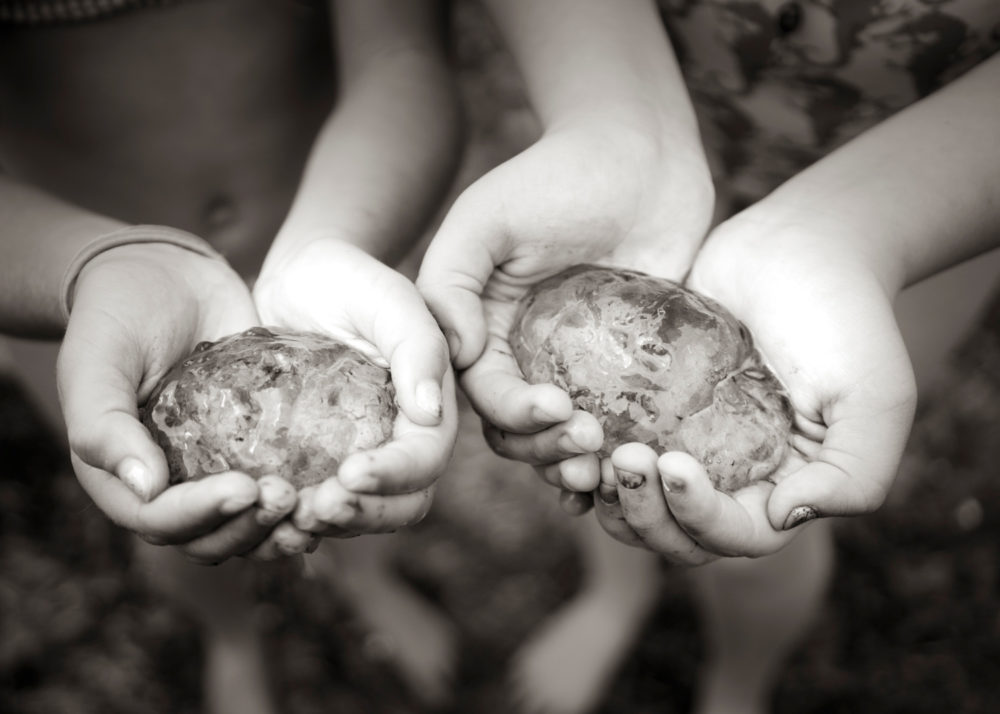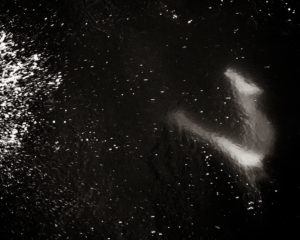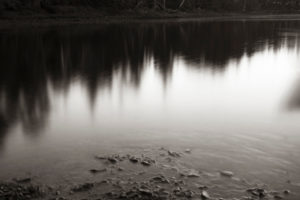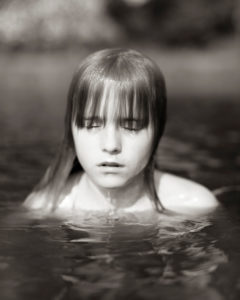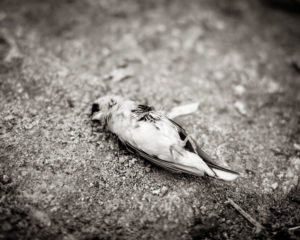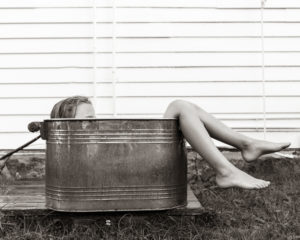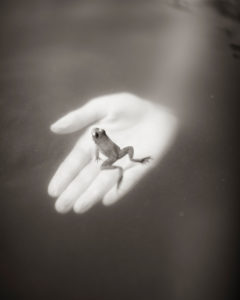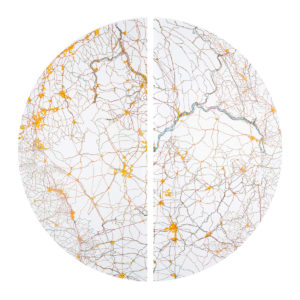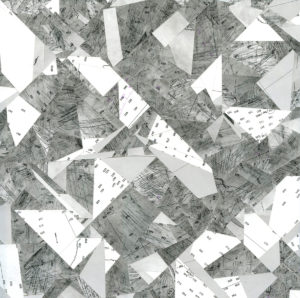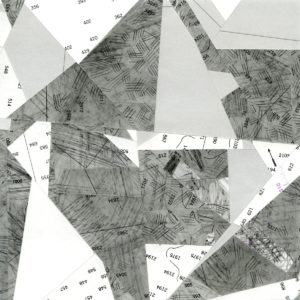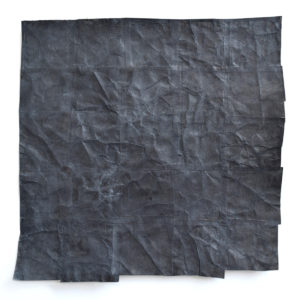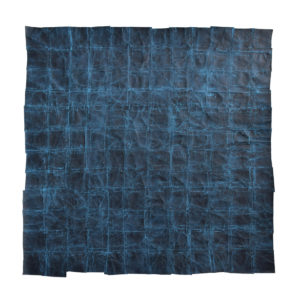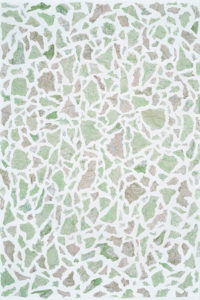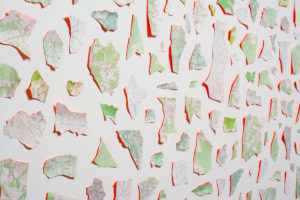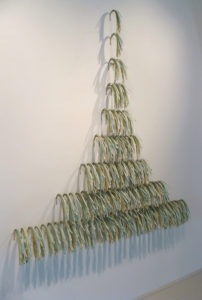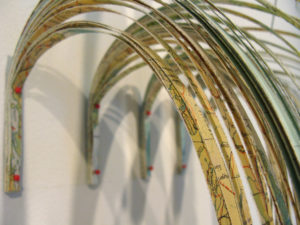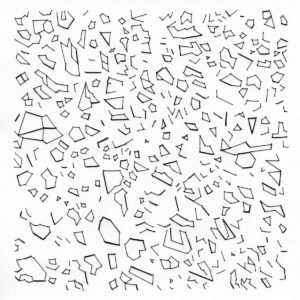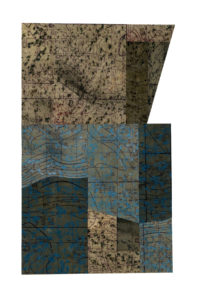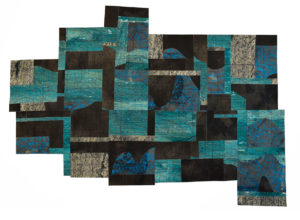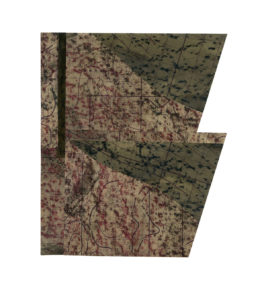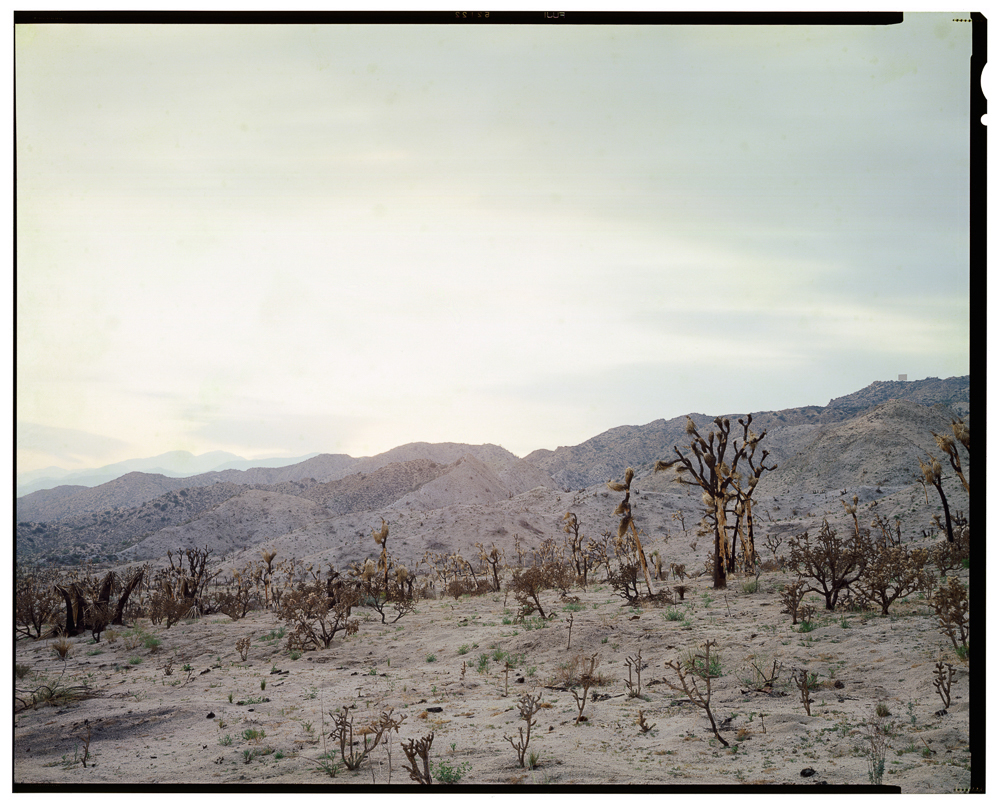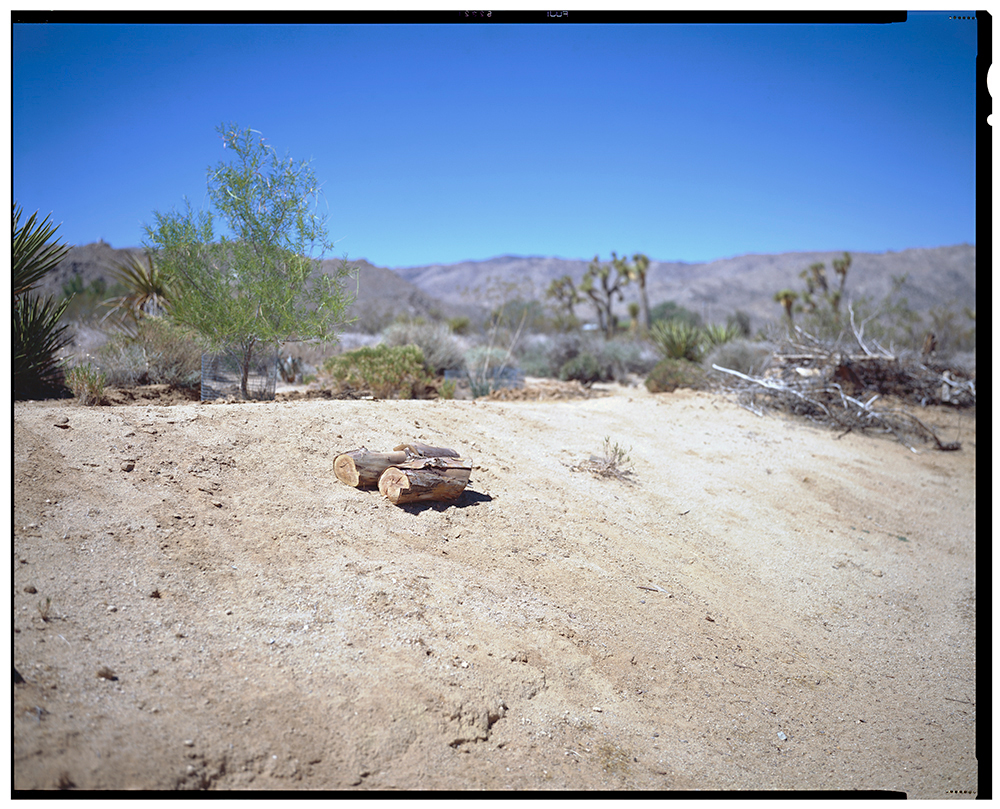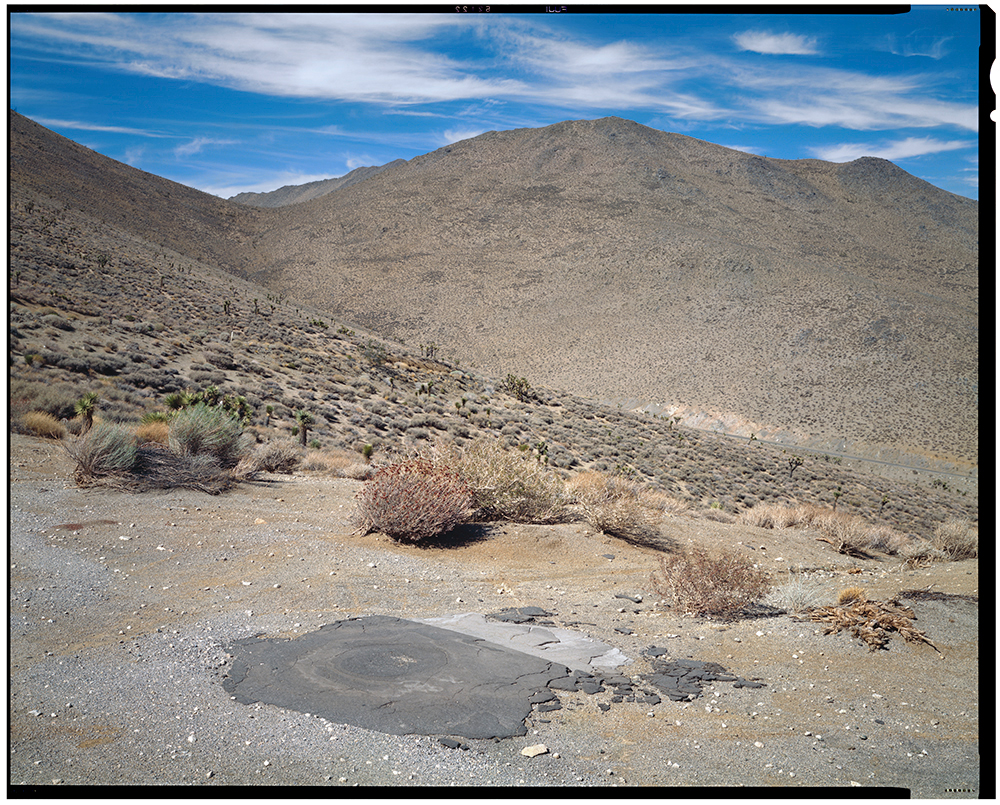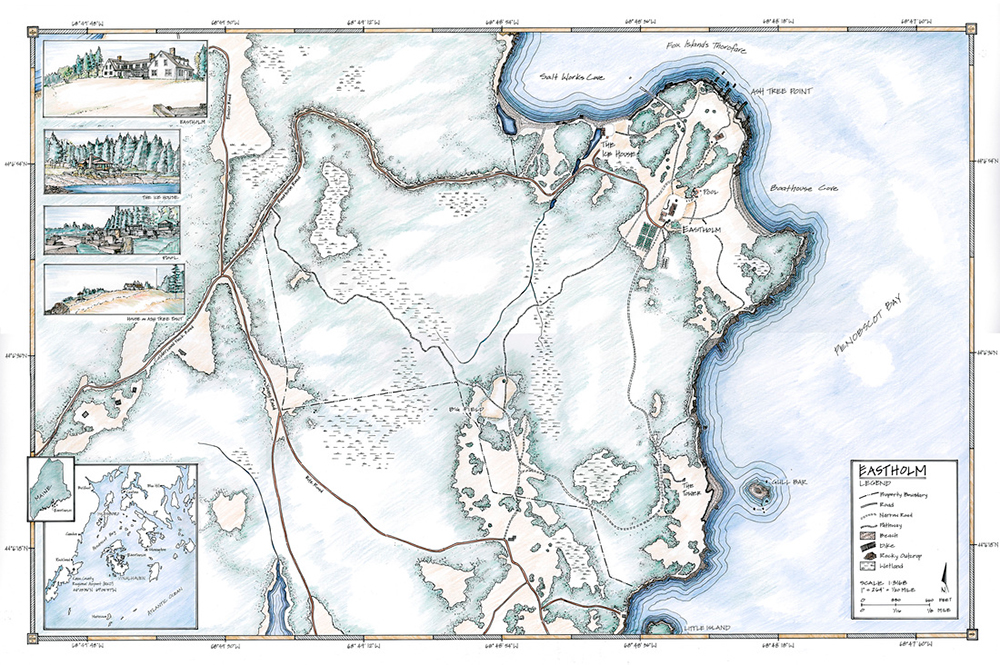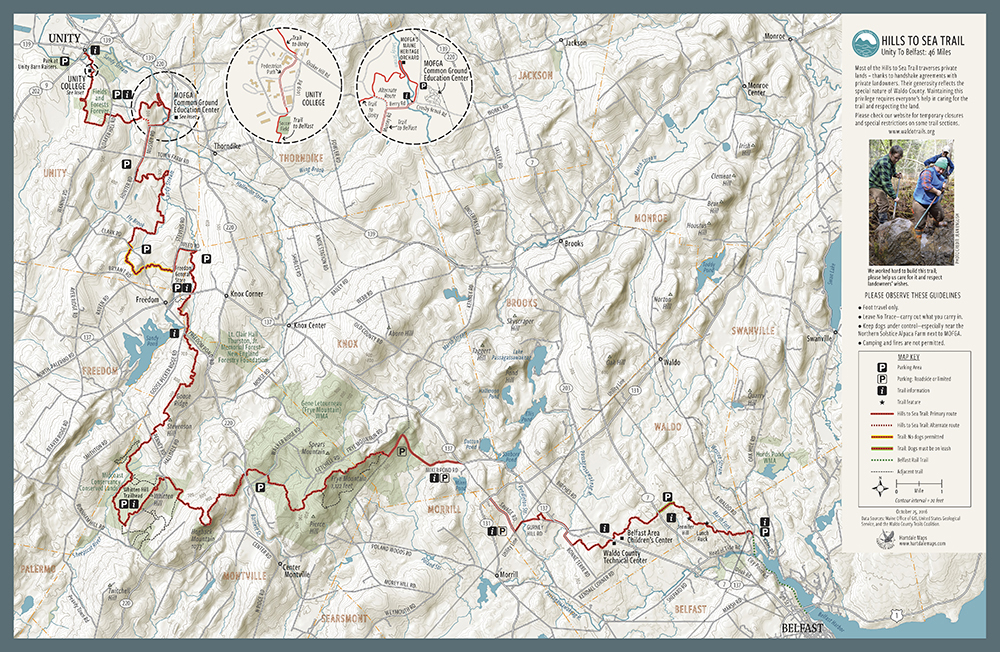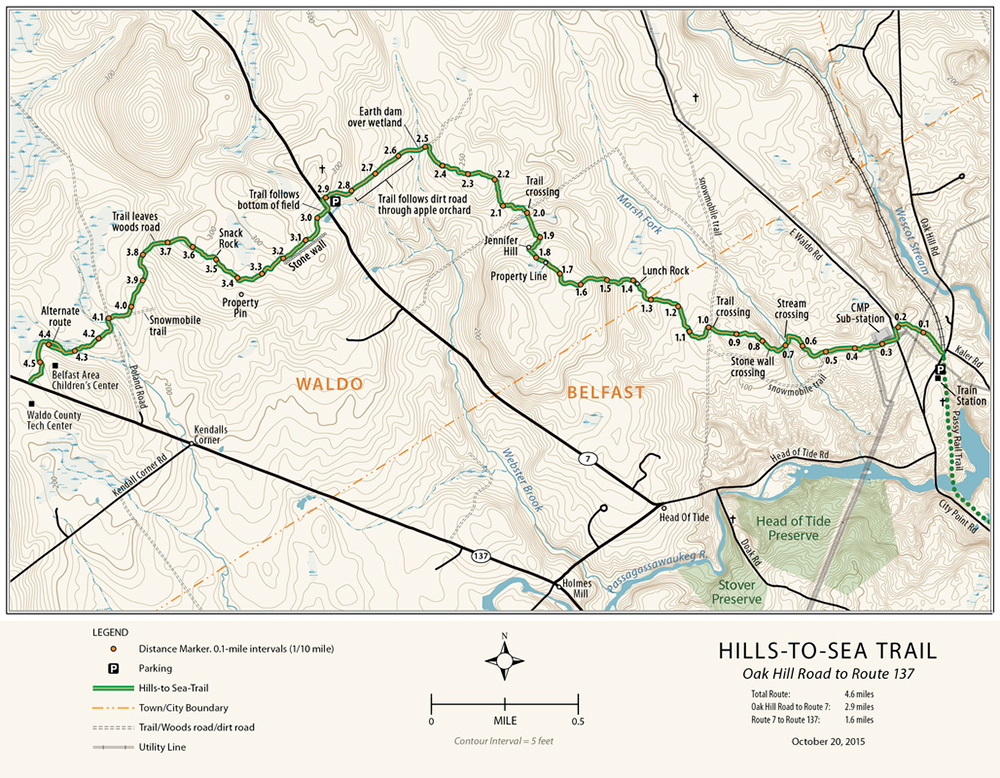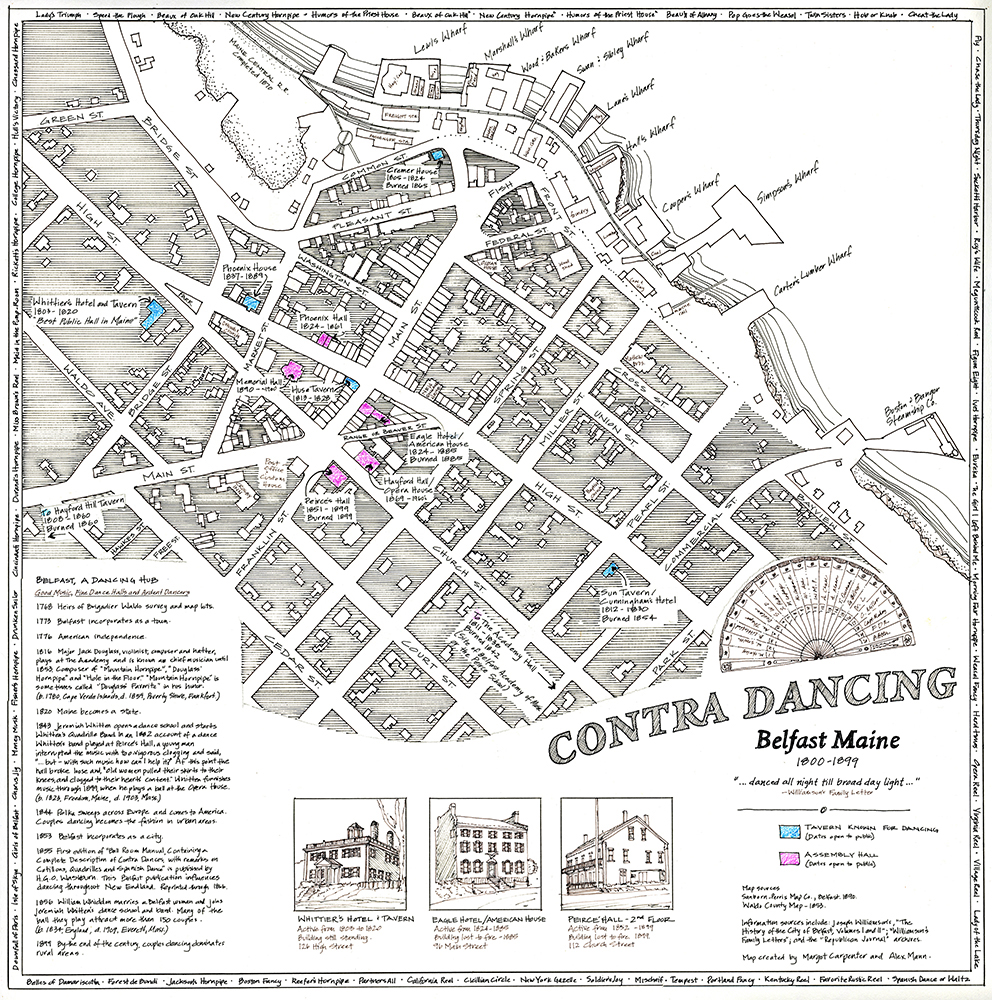Osprey of the Blue Refuge
I come over the dunes into morning light, white light, the kind of light that makes my tripod and 600-millimeter lens worth the weight. I am hunting osprey. For two weeks, I have walked the beaches of the bird refuge, sleeping in my car at the park campground. I’ve found two nests. One sits on a wooden platform beside the campground, its stick-and-sod lattice woven with denim thread and fishing line. The other came down from its nest tree after the last hard rain. I stood right there. I watched it fall.
Early this morning, I went to the visitor’s center to ask after ospreys. I shook hands with the ranger, whose name I could not recall. He knew mine. He stood up behind his desk when I came through the door. “If it isn’t John Cossman,” he said. He waited for his name. The visitor’s center is not air-conditioned, so he sweat. I sweat. Since I could not ask his name, I asked for a map of the island.
He was wearing a park ranger’s Stetson. If he’d taken off the Stetson, I might have known him. I knew we’d gone to school together, to the only island school. I knew he was one
who never managed to get away. Growing up on Santa Rosa Island, you hear it from your parents and your teachers and Mrs. Lewis at the grocery: “If you want to make something of yourself, you’ve got to get off the island.” At seventeen, I did. Four years later, when my choices were Southeast Asia or medical school, I chose medical school.
He asked what work I’d been doing, and I told him I was working as a pathologist in Charleston. I did not tell him fifteen months ago, I diagnosed a cyst from the left breast of a woman—we’ll call her Ms. Lydia Harris—as a radial scar, benign. It was malignant. One year later, they diagnosed tubular carcinoma, stage three, metastatic in five of seventeen lymph nodes. You can’t know what might have been, but her prognosis now is nine months of hell and then fifty-fifty. They printed an interview with her in the local paper, covering the malpractice suit. She said, “I just want him to admit he made a mistake.” But a man doesn’t make a mistake like that. I have diagnosed tubular carcinoma more times than I can count and never gotten it wrong before.
I told him I’d retired.
He said, “Good for you.” He said he’d seen my father a few weeks ago at the food mart. My father lives waterfront on the island’s eastern shore. “Said he was thinking of selling the house, heading north.”
I shook my head. My father built that house fifty years ago. My wife Sandra has been trying to get him to sell and move up to Charleston, closer to us. She thinks he’s lonely. I tell her he likes his space, same as I do. I said, “We’ll have to pry him out of that house.”
“Lots of people are selling,” he said. “Going inland for work. I’ve had every fisherman on the island come through this office in the past three months. They stand just like you’re standing, asking have I got work for them.”
“I’m not looking for work,” I said.
He said, “I tell them like I’m telling you now. I tell them if I had work don’t you think I’d give it to you? In a minute, I’d give it to you.”
“I’m not looking for work.”
He rolled his chair back from the desk, tipped his hat up on his head.
I nearly had his name when Charleston called. I let my phone ring itself out against my hip. It was the lawyer, wanting to confirm tomorrow’s meeting. In the message, she said, “Eight in the morning, doctor.” She said, “See you then.” We are to meet before the deposition. The deposition is tomorrow. The deposition is at noon. I could have left
then, poured a small coffee to go and taken I-10 into the sun. I could have been home in time to eat dinner with Sandra. But I had remembered his name. I leaned across the ranger’s desk, tapped two fingers down on the laminate. “Russell,” I said, “I am looking for osprey.”
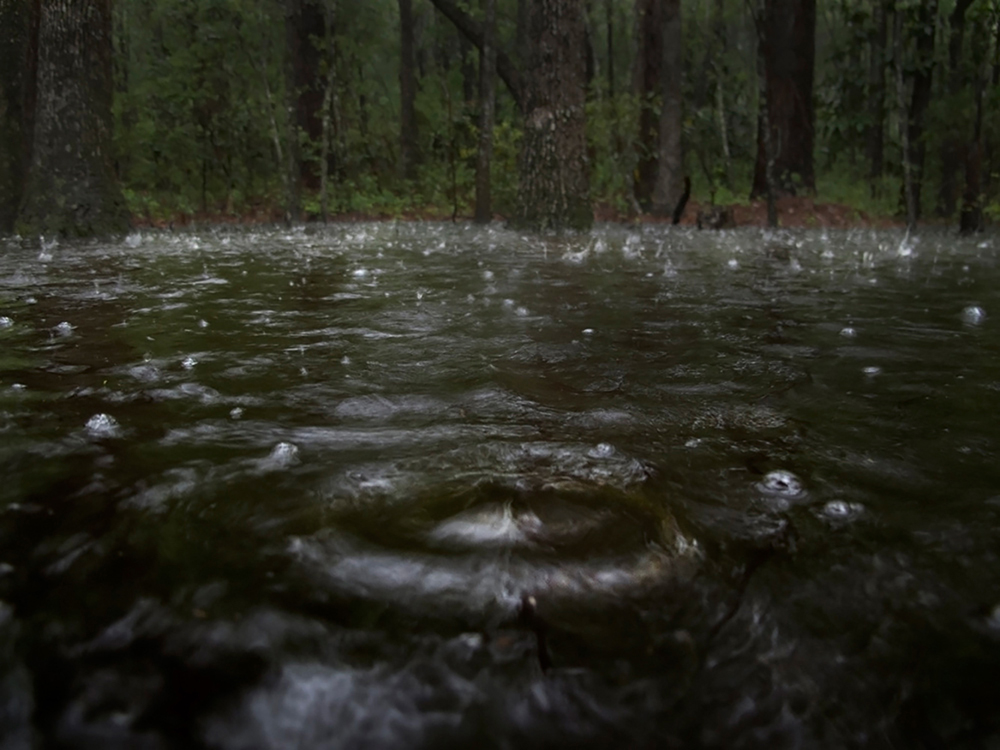
Untitled from series Spirit Stories ©Jessica Hines
I walk east, skirting the loose sand of the dunes, because Russell pointed me east. He said there is a nest this way. “Keep to the shore. You can’t miss it.” I keep to the shore.
From the air, Santa Rosa Island looks like a body afloat on the tide, the bridge a single arm stretched overhead, fingers sunk deep into the Florida coast. The migratory bird refuge runs along the island’s southernmost point, three miles of undeveloped shoreline. I am glad to be here, herding sandpipers up a lip of shore, dodging the stranded jellyfish that shine like blisters. Tar balls pebble the beach. I kneel at intervals, steady my camera on my knee and try to photograph the hurried sandpipers, but the sun is too high. Even underexposed, the sand behind them is too white.

Untitled from series Spirit Stories ©Jessica Hines
Sandra calls. I feel her humming against my hip. I take the phone and hold it in my palm. She will want to know what time she should expect me home, to know if I hit traffic in Mobile, construction outside of Atlanta. “Where are you?”she asks in the message. She asks twice. If I called her back, I would tell her, “I’m leaving now,” and she would say, “I’ll wait up for you,” and she would wait and wait.
Last time I talked to Sandra, she told me they could take our savings if malpractice didn’t cover the suit. They could take the Roth where we’ve been putting money every month for retirement. They could take the house. She said, “I’d hate to lose the house.”
Ospreys orient home by the sun on their biannual migrations. They come to this island from Cuba, following a trail of floating rigs, whose derricks offer places to perch, to rest their wings or lock talons and sleep. At night, when there is no sun, they fly by the stars—not single stars, star patterns, constellations. If clouds obscure the stars, they follow the grid of ultraviolet light. If they are blinded in the name of science, they use magnetic cues to find their way.
I haven’t slept in the house in Charleston in weeks. I wouldn’t mind if they took it. I could stay here, sell prints of my photographs, maybe work as a docent in the visitor’s center, make enough to keep myself in boots and canned peas. I’d enjoy that sort of work, put-your-feet-up work, work that doesn’t help anything, doesn’t hurt anything. When I get back to Charleston, I’ll tell them take the house. I’ll tell them take it all.
At the fishing pier, a male osprey flies reconnaissance over the water, flexing his wings as though he might dive. I pause, focus the osprey in the viewfinder of my camera. I only have one photo of an osprey diving, and that one was an accident. I’d brought my daughter Lacy down to see her grandfather and was taking pictures of her out in the surf. She was maybe seven. In one picture, right in the corner, I caught an osprey with his wings tucked, tipped down toward the water. Lacy is just beside the bird, with her skirt bunched at her waist and one hand skimming the surf. In the print it looks as though the osprey is coming to land on her shoulder, tame as a hunting hawk. Lacy’s studying now in Virginia, studying biology, planning on medical school. I’ve told her there are worse ways she could go.
On the fishing pier, a man works a cast net, his cooler open and empty at his feet. His hands spider across the webbing—limber hands, young hands. My hands are stiff. About a year ago, I started having trouble grasping the fine-focus knob on my microscope. I took to working just with the coarse focus, playing it out and back until the tissue came clear. And I have thought about that. I’ve thought if the image was sharper maybe I would have caught it, would have seen the slight pinching of adipose tissue stained orange, a rusted carcinoma.
Behind the net fisherman, a blue heron skulks, hoping for a handout. Last summer, the pier would have been packed shoulder to shoulder, families sleeping at night in lawn chairs to keep their spot, farming their narrow patch of ocean. That was before the spill, before word came from the trawlers of eyeless shrimp, crabs without claws, two-headed fish, fish covered in boils, in black lesions, fish that bled black at the hook and were black inside, gills and muscle and bone, like they’d been charred.
Strung along the pier’s railing are animal bones, threaded on fishing line with pop tabs and shells as spacers—the bones of fish washed up on shore, of birds and turtles found dead on the beaches in the months after the spill. I walk past a large pelvis, a pelican’s perhaps, and a skull that looks distinctly canine. Someone has added a Marlins cap and a strand of holiday tinsel. At the end of the pier, a sign reads “Make Them Pay.” The oil company has paid. If I look to my left, I will see the cranes and backhoes, quiet for the weekend, which have started construction on a twenty-five-story hotel made possible by the county’s claim check.
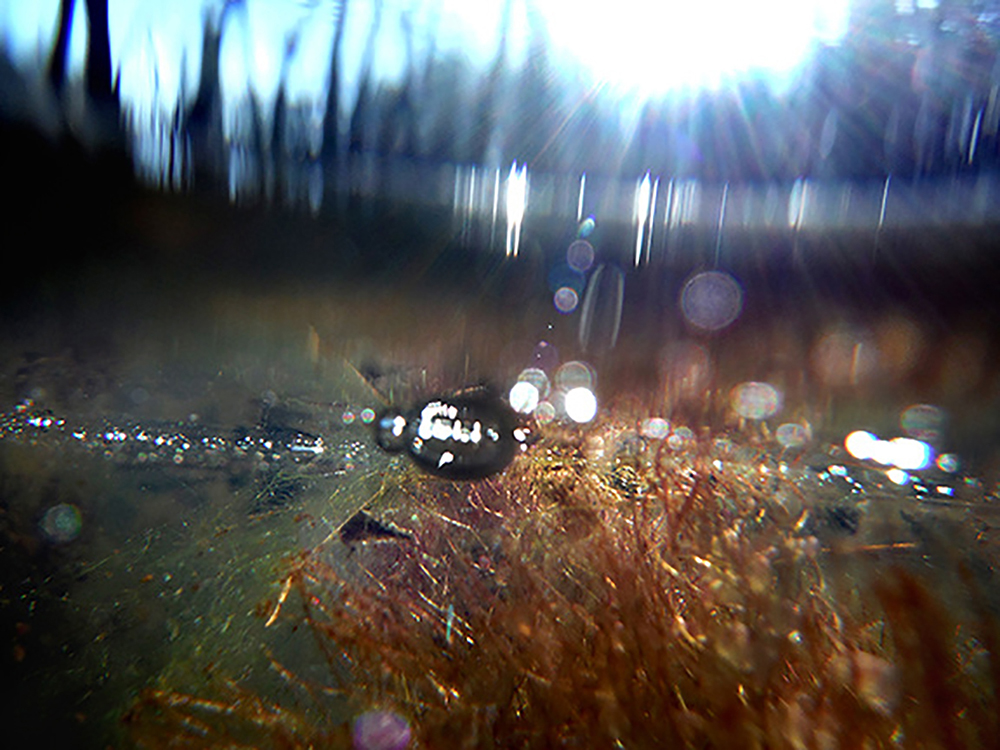
Untitled from series Spirit Stories ©Jessica Hines
Santa Rosa Island was spared the worst of the slick. Off the Louisiana coast, it is said the oil sludge was so thick you could walk between barrier islands without sinking into the water. They burned what oil they could off the surface.
Families gathered on Louisiana beaches to watch the lighting of the Gulf.
On the shore beside the pier, a man wearing headphones plays a free line in shallow water, catch and release. He hasn’t bothered bringing a cooler.
My osprey has ceased his arcs and settled on a branch overlooking the waves.

Untitled from series Spirit Stories ©Jessica Hines
“What are you after?” I ask the man with the free line. He pulls his headphones down from his ears, and I repeat my question.
He says, “Anything that’ll bite.”
We get to talking. He’s headed through to south Florida, comes down every year about this time and stays until spring. “For the warmth.” He asks about my camera, asks if I’m shooting for a magazine, and I shake my head.
“Retired,” I say.
“These things happen, John,” Gary said after the summons. Gary and I shared an office. We shared cases, the head-scratchers, passing them back and forth until we came to a consensus. The day I misdiagnosed Lydia Harris he wasn’t in the office. His son was pitching a little league game, and he had gone to watch.
“You’re a good doctor, John,” he said. I stood looking at my microscope in its heavy dust cover, at the slide trays stacked ten-high on the desk beside it. “You think you could take them for me, Gary?” I asked him. “Just for today?”
He had a stack of his own, but he took them. They asked me to resign the next day.
I tell the fisherman, “I’m living like I should have been all my life.”
He tells me he’s retired as well. He was a conductor, he says. “The Cincinnati Orchestra.”
The osprey leaves his perch, and I raise my camera. I watch him fly. “You miss it?” I ask him.
He shakes his head. “It’s the nerves,” he says. “You get so a body just can’t take it anymore.”
The osprey shades the water with his wings, searching the shadows for the flash of a darting fish. At that shine, he will hover, positioning, then plummet feet first, extending his head at the last moment so beak and talons enter the water together. He will miss just one catch in fifty.
The net fisherman has brought up three small herring and lowers them carefully into his ice chest. I lift my camera. I take one photo—the ice chest, man, and heron all in a single frame. The light is heavy, iron light.
I tell the conductor I’ve been photographing ospreys. “Keeps me occupied,” I say. He can understand that. He’s fishing just to toss the fish back. “Only found two nests so far,” I say. I tell him there’s some who blame the oil for that, say it’s made for bad fishing, say the ospreys are staying away. “Somebody cut corners,” I say.
He shrugs. He says, “Somebody wasn’t paying attention. That’s my guess.”
I shake my head. I’ve thought about it, of course, thought I might have been distracted. I’ve thought maybe the Saturday Gary’s son pitched his first game was the Saturday Sandra told me she was going to visit her sister for a few weeks, maybe a month, said she needed some time away. “I’ll come with you,” I said. She said, “You’ve got work.” I told her I’m ready, anyway, to be retired. “Work three more years for me, John,” she said. “Just until we pay off the house.” I told her she knows, doesn’t she, that I need her here. She said she knew. But it can’t have been that Saturday. That Saturday I didn’t go into the office. I stayed at home with her.
“Grossly negligent,” I say. That is the phrase the courts will use. I say, “They knew what they were doing.”
The conductor has caught a fish. He wades out into the water to take it by the tail, gets it unhooked and tosses it up to the heron on the pier. It is a fifteen-inch sea trout, one-headed. The heron does not, of course, want it. Too hard to get down and keep down.
The fish flaps against the pier, tugging for water, jumping like the ground beneath him is hot enough for cooking.
The net fisherman comes away from his net to stand over the fish. “That’s a catch,” he says to the conductor.
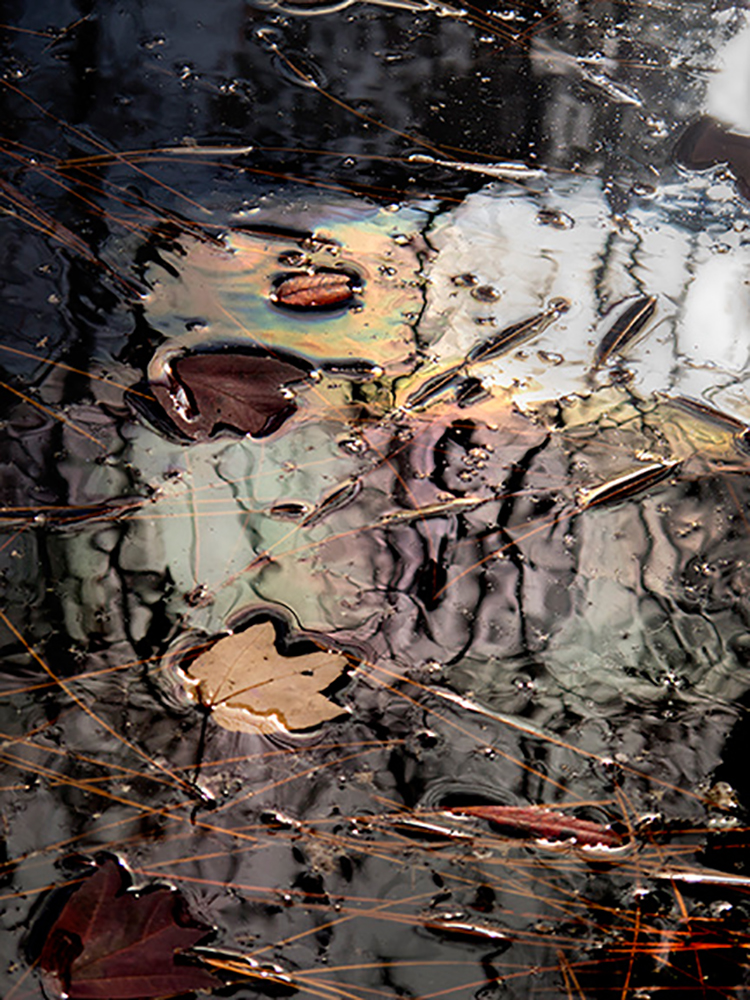
Untitled from series Spirit Stories ©Jessica Hines
The conductor shrugs. “Been at it a few hours. About time.”
The fisherman nudges the sea trout with one toe. “You see the herring out there?” he asks us, pointing over the water. “I bet this one was after the herring.”
I look where he points, and I see them, flashes of silver, fish flying from fish.
He says, “Man tried yesterday to charge me three bucks a pound for skipjack. Three bucks a pound, and the fish so thick out there you could shovel them up.”

Untitled from series Spirit Stories ©Jessica Hines
The conductor says, “I’ve never heard herring to leap like that.”
“Any fish’ll jump if he’s got cause.”
My osprey hovers above the school. I lift my camera. I catch him with kinked wings.
“You got a boat as nice as that camera?” the net fisherman asks me.
I shake my head.
“I’m in the market,” he says. “They took my seiner to Luling to help with the clean up. Might as well take my legs, I told them, but they just needed the seiner.”
“I don’t have a boat,” I say.
I’d lease her from you if you didn’t want to sell,” he says. “Schools like that I’d turn a profit quick.” He tugs at the brim of his ball cap. He is looking down at the trout, which has more meat on it than six herring. “You just going to leave it?”
“I was meaning the bird to eat him,” the conductor says.
“Bird doesn’t look interested to me.”
The conductor shrugs and pulls at the cord of his headphones, which dangles, cut, at his navel.
The net fisherman stoops and takes the trout by the jaw. “You don’t want him.”
The conductor says, “I wouldn’t eat anything out of the Gulf.”
The net fisherman lowers the trout into his ice chest and starts packing away his net. He says, “What else is there to eat?” He lifts his cooler onto his shoulder and makes his slow way down the beach. He stops once to rest, and I point my camera at his back, but the sun is out in front of him, shining directly into the lens. He is just a shadow, the world brightened to rainbow around him like oil sheen on water.
I turn back at a splash. The osprey is coming up out of the Gulf, shaking the water free of his feathers and gaining altitude. He is not carrying a fish, not carrying anything at all.
It is almost noon. I have followed the call of a female osprey into brush so thick I cannot see the Gulf. I did not think to bring a machete, so I swing with my tripod, with my arms. My camera I do not swing, but tuck safely beneath my shirt. The map, I have decided, as I fold and unfold it and turn it in my hands, is useless. It does not show, for instance, the copse of pines shading my bare head from the advancing sun, nor the prickly pear which has just, obligingly, inserted a slender needle through the sole of my right boot into my largest toe. And the marsh visible beyond the acacia could be any of three marshes.
I tighten the belt of my jeans and wade into that marsh. The water is black and warm, folding around me. I come up onto dry land soaked and blooded and feeling altogether good, because a female osprey is perched on a branch just two yards ahead of me, and my eye is level with her lizard eye. She sees past me, past all the heavy-browed hominids right back to Homo erectus egg-snatcher. She knows better than to trust me.
I wander the sand pines, searching for her nest. Last week, I watched a nest fall from a sand pine in a grove like this. It was an old nest, a decade old or older—four feet in diameter, two hundred pounds at least, enough seaweed and grass to start a slow process of decomposition, generating heat for the nestlings. There were two nestlings. When the nest fell, I was squinting through my viewfinder at their snaking heads.
The fall was quiet, marked only by the whistled two-note alarm call of the female osprey hovering above the newly barren tree. I left my camera and crawled into the thicket of sweet acacia surrounding the trunk of the nest tree. I spent forty minutes working on hands and knees, searching for the fallen nest. I found it on its side—sticks and seaweed, down feathers, a scrap of denim.
The nestlings were alive, black-skinned and scaly, reminiscent of their reptilian ancestors. They pulsed with their rapid, whole-body breathing, hissed, flicked their narrow tongues. I took a few pictures, and that’s all I did. I shot them

Untitled from series Spirit Stories ©Jessica Hines
zoomed in tight with the aperture wide open. I caught with my camera the vein of each pinfeather, the bristled legs of the bluebottle flies that swarmed the nest. In the pictures, the background is blurred. In the pictures those nestlings might be twenty yards up in the air.
I wander until I lose the light. I do not find a nest, but I know it is close, because twice the female osprey flies a tight circle over my head. I lift my lens to shoot her agitated.
She wheels with spread wings, sounds her alarm to the standing pines. I play the manual focus out and back until she is so sharp through the lens I can count the ruffled feathers of her necklace, which mottle her white breast.

Untitled from series Spirit Stories ©Jessica Hines
I walk back to the campground along the narrow seawall surrounding the old naval fort. As a boy, I rode my motorbike along this seawall, picking up speed and lifting the bike onto its rear wheel. In those days, colonies of plovers nested on the island, thousands of them, stretched for a half-mile
along the shoreline and packed so tightly you couldn’t pick your way through without putting one foot down in a nest. You could walk right up to a brooding plover, take her from the nest with one hand and wring her neck, easy as collecting shells. We used to cook and eat them when the weather kept us from fishing.
One night I took my motorbike down onto the beach and through the center of the nesting colony, plovers blowing up before the front tire like scraps of shredded paper. I came away from the colony scratched and splattered with urea. My father, when he heard, was furious. In part, because the bike’s sprocket and chain had to be replaced, but mostly because I had proven myself capable of malice he had not expected.
After that night, I could not get within fifty yards of the colony without being mobbed by a dozen birds, sprayed with excrement. Every year it was the same. Even when I returned after eight years away, the birds remembered me. The plovers are protected now, the shells of their eggs so thin they shatter at a touch. They don’t nest on this island anymore.
Sandra calls. I answer. I don’t want her thinking something happened to me on the road. I don’t want her worrying.
She says, “John.”
I ask her if she thinks I made the misdiagnosis on purpose.
She says, “No.” She says, “Where are you?”
I say, “What other explanation is there?”
She says, “Have you left yet?” She says, “It was a mistake, John. They know it was a mistake.”
I tell her I haven’t left yet. I tell her I don’t know when I’m leaving.
“You can’t miss the deposition. It’s against the law to miss the deposition.”
I say to her, “I know.”
“No one thinks you’re a criminal, John.”
I say, “I knew what I was doing,” thinking not about the Saturday I misdiagnosed Lydia Harris, but about all the other Saturdays, the Saturdays I remember. The Saturday Lacy broke her wrist playing softball, and I signed out two frozen sections before meeting Sandra at the emergency room. The Saturday Sandra’s mother passed, and we stopped at the office on our way to the airport, so I could sign out a lymph node biopsy—sarcoidosis, benign. The Saturdays I bickered with Sandra over cold cereal and came to the office head-pounding. I imagine the day I misdiagnosed Lydia Harris was a Saturday like any other Saturday. I woke in the morning and left Sandra sleeping. I made a pot of coffee, put Sandra’s mug in the microwave, so it would be ready to heat when she woke. I drove twenty minutes to the office and parked in the lot reserved for doctors. The office was quiet, as it always is on Saturdays. It’s one of the reasons I like working Saturdays, you get the place to yourself. I took my time over the frozen, just the single frozen, and finished the handful of cases left from the week before. I returned home for dinner, and when Sandra asked how was it, I told her, “A good day.” I told her, “One frozen, benign.” I told her, “She got lucky.”
I call my father, because it is Sunday, because we eat dinner together on Sundays when I am on the island. He is free,
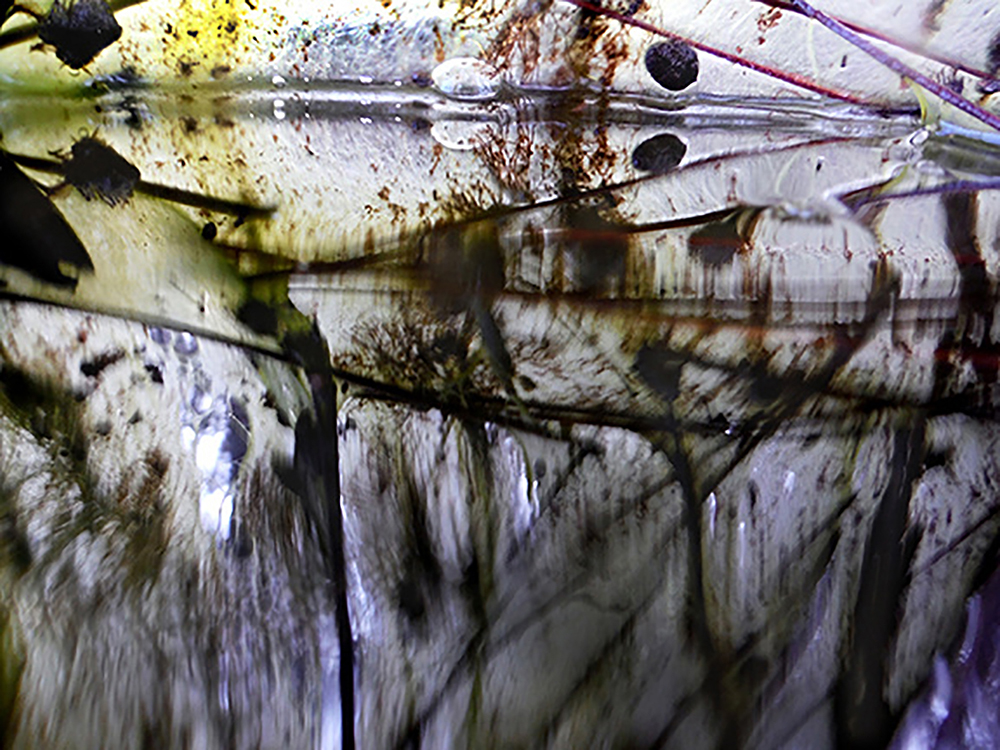
Untitled from series Spirit Stories ©Jessica Hines
he says, and so I pick him up from his house and take him toJoe’s, the only diner on the island that doesn’t serve seafood. After dinner, I ask him if there is any place he needs to go, but he says Mrs. Parker took him into town that morning. She takes him once a week for groceries and to refill his prescriptions. On Saturday mornings, she takes him to the brunches Gulf Power puts on for their employees, past and present. He wears his denim work-suit and the gold star he was given at retirement for putting in forty years. He retired at seventy-two, though I suspect they kept him on, those last few years, just out of obligation. He’s the only one at the brunches with a star. The other attendees are all kids in their thirties. Pole boys, he calls them.
I bring him to the refuge, driving slowly to miss the ghost crabs that scuttle across the beach road. We stand on the path leading from the campground to the water catchment tanks. We have a clear view of the turnip nest, so named for its shape and the patch of turnips growing feral in front of

Untitled from series Spirit Stories ©Jessica Hines
it. There are three chicks in the turnip nest. I steady my camera on its tripod, the viewfinder centered on them, just in case.
My father hasn’t been in the refuge since I came down with Lacy three years ago. On that day he had to double the strings of his swimsuit around his waist to keep it from slipping down. It was a green flag day, a calm day. We went out into the waves, the three of us. Lacy grinned every time I looked at her. She was seventeen and already keeping her distance, but I like to think she enjoyed herself that day. Dad lost his footing in the surf once, ended up tipped backward, working his arms in the water, head dipping under and surfacing again, spluttering.
I didn’t move. It’s not something you expect to see, the man who striped your thighs with a Sam Browne belt panicked like a beetle on his back, swallowing water. Lacy was the one who pulled him to his feet, and after she stayed close right beside him. She put one arm around his waist, taking his weight, struggling with him up out of the water and into the dune fields. I came behind them, watching her, thinking she was going to be all right, Lacy, thinking kids mostly raise themselves, wondering at how easily she loved him.
I asked him this evening if he wanted to go out into the surf, but he said he’d rather not, so we are watching birds. The female is on the nest. If we watch long enough, I say, we’ll see the male fly in with a fish. He’ll have eaten what he can of the head and torn the rest away to lessen the weight.
He says, “I talked to Sandra this morning. She seemed to think you were heading home.”
I say, “She doesn’t need to worry about me.”
“When are you heading home?”
I tell him I don’t know.
He says, “You’re a smart man, Dr. Cossman, and you’re throwing that away.” He doesn’t approve of my early retirement. He doesn’t know anything about Ms. Lydia Harris, who is right now walking through her house to her children’s bedroom, walking as though through sand, heavily. She rubs at her neck, her shoulder, tired and aching in her limbs and right to blame me.
I bend again to my camera, focus it on the silhouette of an osprey on the near shore. It might be the female from the nest that fell. I can’t be sure. She is perched high over the waves, scanning for fish. I wonder if she has abandoned the nestlings, and if some part of her is relieved to have finally failed, glad to have the evening to fish just for herself.
We wait another thirty minutes, though there’s no point. The nest is quiet, and the light is low, western light, rusted light. He is impatient, and so I drive him home in my car, which he does not like, crowded as it is with dirty clothes and an unrolled sleeping bag, canned food, camera equipment.
“Is there a restroom,” he asks me, “at the campground?”
We’re past the campground. “I can go back,” I say, but I do not turn around.
He says, “I’ll be fine.”
He wets himself three minutes from his house. I look over when I smell the ammonia, but he is backlit by the window, and I can’t see his face. When I pull up into the drive, he says, “You go on in.”
He comes in a few minutes after me, says, “I’ve got sheets put on your bed.” Says, “You sleep here tonight, and in the morning we’ll take your car to the wash to get the sand off of her. You’ll ruin her with that sand.”
I wait until he is in his bedroom, running water for a shower, then I take a towel and a bottle of stain remover from the laundry closet. He has tried drying the seat with a wad of Kleenex. Bits of the Kleenex are stuck now to the upholstery. I towel it dry, soak it with stain remover and towel it again. I leave the windows open.

Untitled from series Spirit Stories ©Jessica Hines
We sit together in the breakfast room where I once fixed up an old Nikon rangefinder. I shot two rolls of film with that camera, developed them at this table, in a darkroom I made by draping black canvas over a hat stand.
I stay long enough to share a pot of coffee. He cuts coupons from the Sunday paper. “I’m selling the house,” he says. He looks at me over the paper.
I say, “This house?” He built this house after we moved down from Virginia. He was happy in those early years, living on a 34-foot sloop, trucking lumber over from the mainland. I was happy.
“You don’t want the house,” he says, “and I’m getting too old to live like this.”
I say no to the first, no to the second. I say, “You’re doing fine.”
He works his scissors around an advertisement for turkey sausage. His hand shakes.
“If you want a smaller place,” I say, “I can find you a smaller place.”
“I thought I’d go with you to Charleston. When you go.”
“I don’t know when I’m going.”
He nods. “When you do.”
“We don’t have the space,” I say, “in Charleston.”
“All I need’s a place to sleep,” he says, but his house is full of things, and our house is full of things, and we might not have the house.
I say, “You built this place.”
He says, “I had a son to raise and no place to raise him.” He says, “No one would build it for me.”
I drink my coffee.
He says, “I watched them bury Lutt Parker in sand so shallow next storm he’ll be above ground again. You hit an age you start thinking practically about these things.”
“There’s time and time,” I say, “to figure all that out.”
“Virginia’s solid ground. I wouldn’t mind Virginia.”
“You came to this island. You left Virginia.”
“I came to this island to raise a boy up. And I did that.” He raps his finger down on coupons offering fifty cents off Selma’s Blueberry Spread or two stone-baked pizzas for the price of one. “Island like this, you want to be just passing through.”
The visitor’s center at the refuge is closed. I walk past it, east into the pine forest, toward the place where the nest fell. I pass a park ranger headed the other way. “You can’t sleep out here,” she says. “You have to stay in the designated camping grounds.”
I tell her I’m just walking.
She wants to know if I have a camping permit, and when I tell her it’s in my car, she wants to walk with me back to my car. We walk together. She stays behind me, as though given half a chance I would turn and bolt. She says, “There’s no camping in the park without a permit.”
It takes me ten minutes to find the permit. While I’m looking, she bends the brim of her hat in her hands. It is the traditional park service hat, the Smokey Bear hat, the lemon squeezer.
I hand her the permit. She looks it over.
“I haven’t broken any rules,” I tell her.
She hands it back. She says, “Have a good night, Mr. Cossman,” and I do not correct her.
“At the campground, the conductor has built a fire using two-by-fours as fuel. When he lifts a hand to me, I go to sit beside his fire, though the sun has just set, and it is still eighty degrees at least. We sit in silence. I pinch the sand flies that
land on my arms and drop them into the fire. At intervals, he hums a few measures of nothing familiar, and when he realizes he’s doing it he glances over at me, grins, embarrassed, and slaps his left hand with his right, as though in reprimand.
There is nothing at his campsite but an army-issue tent and the chair he is sitting in now. “Where are your things?” I ask him. “Your car?”
“Sold the car,” he says. “Ten years ago, it was.”
“How’d you get down here?”
“I had a buddy coming as far as Atlanta. I got down all right.” He kneads his hip with one hand.
“It’s the wet,” I say, because my knees have been aching and slow to bend.
He shakes his head. He tells me he shattered the joint years ago. He fell off the podium halfway through Tchaikovsky’s Fifth Symphony. “Ten feet. Down into the orchestra pit.” He tells me they don’t list his name with the other conductors for the Cincinnati Orchestra. Every other name, but not his. “Nine months I waved a baton for them, and they can’t be bothered to remember my name.”
“I ask him what is his name. Daniel Hartzog, he tells me, and I say it back to him to be sure I’ve got it right.
“What about you,” he says. “Think they’ll remember you?”
“I say, “Yes. I do.”
“Well then,” he says. “That’s something.”
The other campers come from their air-conditioned fifth wheels and Winnebagos to join us. They would stay in the cool if they could, but the conductor has built a good fire, and so they come with folding chairs and children and easy
talk. The conductor is quiet. A fly has landed on his cheek, just beneath his right eye, and he does not lift a hand to brush it off. But when a man takes a guitar from a black leather
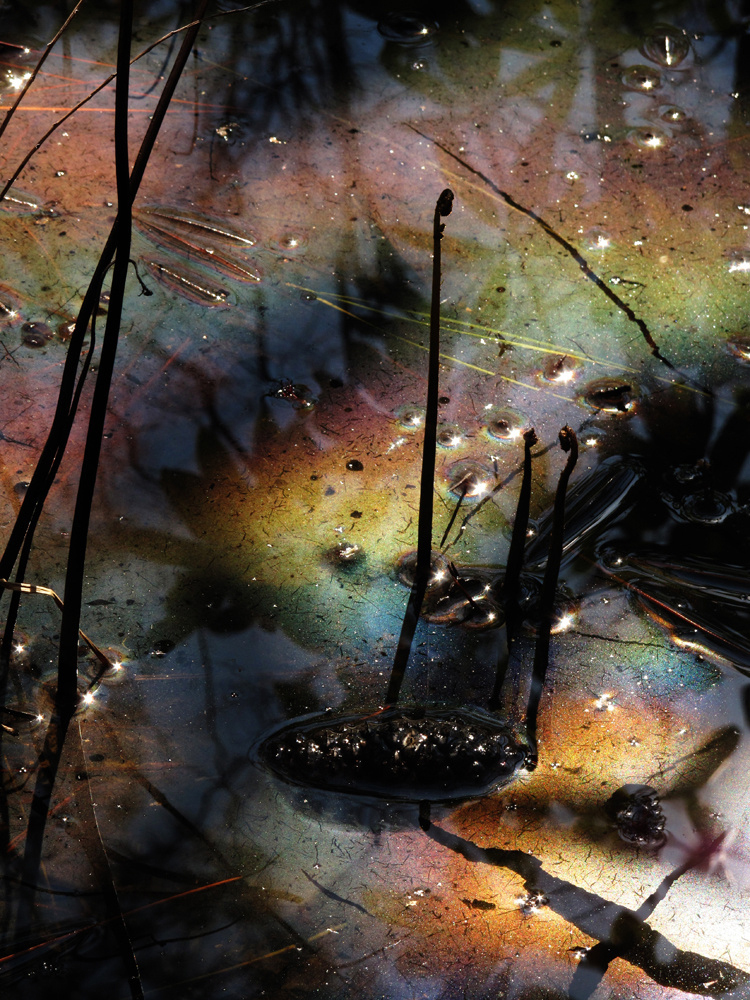
Untitled from series Spirit Stories ©Jessica Hines
case and starts to strum, he puts on his headphones. He leans over and tells me to have a good sleep. He stands, offers his seat to a woman standing behind it, and ducks into his tent.
I leave soon after, because someone puts a piece of driftwood on the fire, and it burns with a smoke thick and black as tar, smelling of diesel. I walk to my car. If I left right now, I’d arrive in Charleston by nine in the morning, late but not too late. In Charleston, Sandra is lying awake in our bed, not expecting me. Ms. Lydia Harris sits in an empty
bathtub, fully clothed, nauseated. Her eyes are shut. The tub rocks beneath her, and she waits, waits for the rocking to cease, for the tide to pull back and leave her steady on the shore. In Charleston, they have photographed the slide of adipose tissue using a lens dipped in cold immersion oil. There is nothing in those photos I haven’t seen before.
00
Award winning artist and storyteller, Jessica Hines, uses the camera’s inherent quality as a recording device to explore illusion and to suggest truths that underlie the visible world. At the core of Hines’ work lies an inquisitive nature inspired by personal memory, experience and the unconscious mind.
Morgan Thomas graduated with an MFA in fiction writing from the University of Oregon. She is currently a Fulbright student, teaching English and creative writing in Darkhan, Mongolia.











































